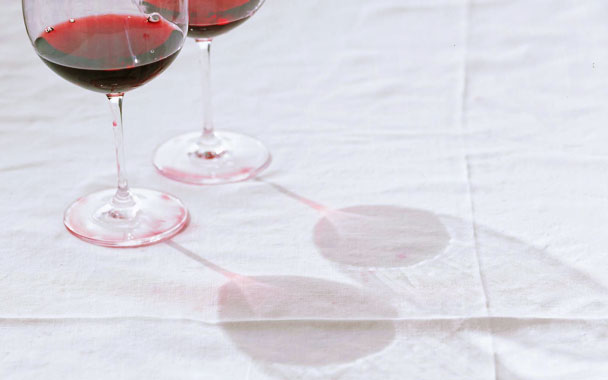More than 20 years ago, on a busy fall night, I lost my heart for the first time. I was behind the bar at a small restaurant in Rhinebeck, New York, mixing drinks, opening beers, answering the phone—the usual bartender routine. A Culinary Institute of America student had dropped a cassette on the bar on his way in. In the year or so I'd been tending bar there, he'd been in five or six times. He often brought his own wine, and he always brought music to woo his date by. I didn't know his name, but I was always glad to see him—it meant a short respite from the usual sound track. As this particular dinner hour wound down and the serious drinkers settled in for the long night ahead, a waitress brought me a nearly empty wine bottle and told me it was from “the Culinary Institute guy.”
I'd been out of college a year, and wine was not high on my drinks menu. I'd had plenty of the jug stuff, and it did what it was supposed to do; I'd certainly tried “serious” wine, but it usually seemed unpleasantly sour and bitter. I was about to experience a paradigm shift.
My dinner break rolled around, and as I ducked under the bar, I saw the wine bottle. In a corner of the now empty dining room I took a sip. I was dumbfounded. It tasted like nothing I knew. The wine wasn't bitter or sour. It wasn't sweet, exactly, at least not like the Mountain Nectar I'd gotten used to—it tasted like a mouthful of ripe fruit. The bottle said “Pinot Noir” and “Domaine Laurier.” Sounded French. Why wasn't it mouth puckering and thin like the bottle of Bordeaux our busgirl had liberated from her parents' cellar? Was it because, as it also said on the label, it was from Sonoma County? The whole thing was baffling. And I had to eat my dinner and get back to work.
For months I looked for a bottle of Domaine Laurier Pinot Noir. When I finally found one and brought it home, I couldn't bring myself to open it—it seemed too special. Seven years and many thousands of miles later, I stumbled upon a reference to Laurier in a newspaper column. The story mentioned the winemaker there: Merry Edwards. I decided to open the 1979 Domaine Laurier Pinot Noir I'd carried back and forth across the country in the trunk of my car. You can guess what I found—complete and utter disappointment. There was no fruit, barely any color. I'd killed it.
As the years went by and I grew more interested in wine, I occasionally came across Edwards's name in connection with wineries other than Laurier, and so I bought wines from Olivet Lane, Pellegrini, and Nelson Estate. More recently, if I saw a Merry Edwards Pinot Noir on a restaurant wine list, I always ordered it. Her wines seemed to have finesse and elegance without sacrificing intensity or fruit. They weren't flashy and they didn't hit you over the head. They seemed to complement good food perfectly.
On a recent trip to the Russian River Valley, where Edwards has, after more than 25 years of making wine for others, established her own vineyards, I finally got to meet the person responsible for my love of wine. She was as intense and direct as her wine. Nothing about her operation suggested a winemaking superstar. I was particularly surprised by her personal wine cellar, which was about the size of a small walk-in closet. Although modest, it held the up-and-down road map of Edwards's career—some great bottles, a few labels that had fallen victim to corporate takeovers, much critical acclaim, and plenty of struggles. Trying to sound nonchalant, I asked if there might still be a bottle of the 1979 Domaine Laurier Pinot Noir. Edwards's husband, Ken Coopersmith, looked a little puzzled but gamely poked around a bit. He pulled out a Laurier from 1990. “Um, I don't think Merry was at Laurier then.”
I let it go, not wanting to seem pushy. We shared a glorious home-cooked meal, accompanied, needless to say, by a delicious bottle of Pinot Noir. The excitement of finally meeting Edwards almost obscured the nagging sense that I had apparently gotten a key fact wrong. A few days later, the afterglow had faded, but the question remained. I got on the phone, working my way back through the various winemakers at Laurier. I arrived quickly at the Merry Edwards years, 1989 to 1991. It was true, she hadn't made wine at Laurier until years after my eureka moment. My emotions ran the gamut from confusion to sadness to betrayal. Of course it wasn't her fault, but how to explain my deep attachment to the wines I had always thought she'd made? Had I been blinded by my first crush? And who, in fact, had made that wine? I kept working the phone. Eventually I found Steve Test, now the winemaker at Merryvale (no connection to my Merry). He worked at Domaine Laurier starting in February of 1980, and he bottled the 1979. Who, I asked him, made the 1979? “The original winemaker there was Terry Leighton,” Test replied. “He was a professor of microbiology at Berkeley. I know he was there in 1978, and I think he was still there in 1979. Kalin Cellars is his winery now.” I tracked down the number and called. This had to be it. I'd reached the end of the line. The phone rang. A machine picked up. I left a message. I waited. And while I waited, I went out and bought a bottle of the Kalin Cellars Cuvée DD Sonoma Pinot Noir 1994 (astonishingly, it was the current release). It was strange, but delicious—full of wild aromas and flavors, changing with every sip.
He never called back. Love hurts.




 Pinterest
Pinterest






